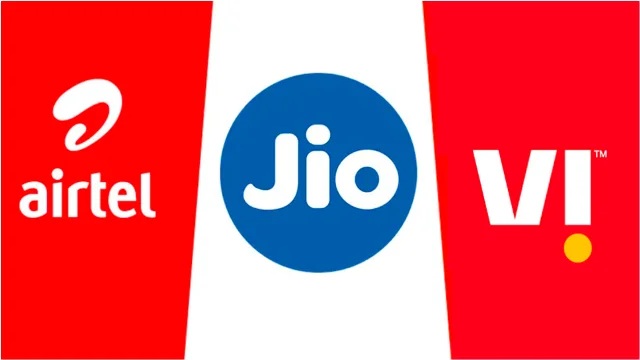From Affordable Communication to Coerced Consumption — India’s Telecom Users Deserve Better
By: Javid Amin | 01 Aug 2025
A Silent Crisis in India’s Digital Landscape
In a country known for leading the digital revolution with the world’s cheapest mobile data rates, a quiet crisis is unfolding. Beneath the flashy 5G advertisements and glossy corporate profit reports, millions of Indians—especially the elderly, rural poor, and basic phone users—are being priced out of basic connectivity.
Mobile tariffs in India have surged without proportional benefits, trapping users in bundled data plans they neither want nor need. What was once hailed as the triumph of inclusive telecom has morphed into a system of subtle exploitation.
This isn’t just an economic story—it’s a social one. It’s about coercion disguised as convenience, and policy silence masquerading as free market dynamics. It’s time the Telecom Regulatory Authority of India (TRAI) acknowledged its duty—not just to corporations, but to citizens.
Let’s unravel the truth behind the mobile tariff hikes, hidden practices, and what it means for the average Indian consumer.
The Unseen Toll of Telecom Tariffs
Gone are the days when a ₹99 recharge assured a month’s worth of voice connectivity. In 2025, basic mobile access has become disproportionately expensive, and the worst-hit are those who rely on mobile phones only for calling.
From retired pensioners in small towns to daily wage workers in metros, millions use phones as a necessity—not a lifestyle. Yet, they’re being forced into data-loaded plans that do not serve their needs.
This isn’t a pricing strategy. It’s a systemic exclusion of non-data users—an unfair evolution of an industry originally built on affordability and access.
Who is Getting Affected?
-
Elderly citizens with feature phones
-
Low-income households without smartphones
-
Women in rural areas with limited digital literacy
-
Children using basic calling plans for emergency contact
This is not about resisting change. It’s about ensuring no one is left behind in the name of progress.
How Mobile Tariffs Tripled Since 2022
Let’s dissect the math behind the hike in mobile tariffs in India.
| Year | Base Calling Plan | Validity | Annual Recharge Cycles | Total Cost (Est.) |
|---|---|---|---|---|
| 2022 | ₹99 | 28 days | 13 | ₹1,287 |
| 2024 | ₹155 – ₹179 | 28 days | 13 | ₹2,015 – ₹2,327 |
| 2025 | ₹179 – ₹239 | 28 days | 13 | ₹2,327 – ₹3,107 |
That’s a 3x increase in just 3 years for voice + data bundles, even when users may not use data at all.
Key Tricks Telecom Giants Use:
-
Shrinking validity from “1 month” to “28 days”
-
Killing off low-cost, calling-only plans
-
Auto-bundling non-removable data
-
Increasing the base price every 12–18 months
The result? Consumers are now paying more frequently, for more than they want.
Bundled Data Plans — Penalizing Simplicity
You’d think simplicity would be cheaper. But in India’s telecom market, less is more expensive.
Jio, Airtel, and Vi have silently removed voice-only plans, forcing users to choose from hybrid or data-heavy plans, even if they only make calls.
What’s wrong with that?
-
Data goes unused, but gets paid for
-
Basic phone users can’t use the data
-
Complex recharge options confuse seniors and rural users
This is equivalent to being forced to buy a cable TV package when you only want one news channel.
It’s anti-consumer. It’s deliberate. And it needs to change.
The “13-Month Year” Tactic — When Time Becomes a Billing Tool
Let’s talk about one of the most clever (yet unethical) strategies in modern telecom: the 28-day recharge trap.
By offering plans with a 28-day validity instead of a calendar month, telecom companies have artificially created 13 billing cycles per year.
What does that mean?
-
An annual inflation of 8.3% in your mobile bill—without any actual price hike
-
One extra recharge annually, sneaking in over time
-
A billing structure designed to be invisible to the casual user
This strategy is not illegal. But it’s certainly manipulative—and deeply unethical when applied to the country’s most vulnerable mobile users.
Digital Discrimination — Seniors & Basic Users Marginalized
Let’s be clear: not every Indian owns a smartphone. According to recent reports:
-
Only ~45% of rural India owns a smartphone
-
Over 110 million Indians still use basic feature phones
-
Millions of elders use mobile phones only for voice calls and SMS
But where are their plans?
Gone.
Today’s telecom ecosystem actively penalizes users who do not conform to its data-first model. For the elderly, it’s not just about cost. It’s about complexity, confusion, and compromise.
Common issues faced:
-
No voice-only recharge options
-
Unnecessary data deductions
-
Confusing USSD codes and recharge menus
-
Poor customer care support
The result? Digital discrimination—where simplicity becomes a liability and tech conformity becomes the price of connection.
Telecom Profits vs Public Pain
India’s top telecom companies have been raking in record profits year after year.
Average Revenue Per User (ARPU) Trend:
-
2019: ₹98
-
2022: ₹146
-
2024: ₹193
-
2025 (projection): ₹300+
While companies cite 5G rollouts and infrastructure investments, a major chunk of ARPU growth is extracted from low-usage, high-payment users—those who barely consume data but still pay for it.
It’s a disturbing truth: profits are now built on forced consumption, not user satisfaction.
Meanwhile, TRAI remains curiously silent.
TRAI’s Missed Opportunities
The Telecom Regulatory Authority of India is not just a facilitator of spectrum auctions or network expansion. Its primary role is consumer protection and policy enforcement.
Yet, its recent track record reveals troubling complacency.
What TRAI Has Ignored:
-
Silent elimination of voice-only plans
-
Validity distortions through 28-day cycles
-
Bundling tactics with no opt-out
-
Lack of transparency in plan naming and benefits
-
No public hearings on tariff changes impacting low-income users
The watchdog has become a bystander.
This regulatory vacuum allows private telecom players to rewrite the rules—to the detriment of public interest.
India Needs Fair Tariff Reforms Now
We’re not against progress. We’re against forced progress that excludes millions.
Urgent Telecom Tariff Reforms Required:
- Reintroduce voice-only plans under ₹100
- Ban 28-day validity; standardize to calendar months
- Mandate plain-language disclosure of plan benefits
- Require opt-out options for bundled data
- Audit telecom pricing yearly for anti-consumer patterns
- Create plans for the elderly, rural & differently-abled users
Reforms like these are not difficult. What’s missing is regulatory willpower.
Voices from the Ground — Real Stories, Real Suffering
“I only need calling—why am I paying for data I don’t use?”
— Retired schoolteacher, Rajouri
“My grandmother struggles to recharge her phone every 28 days. It’s exhausting.”
— College student, Srinagar
“We need TRAI to step up. These telecom companies are bleeding us dry.”
— Activist, Baramulla
These are not isolated complaints. They represent a growing discontent across India. From Kashmir to Kerala, rural Bihar to urban Mumbai—telecom exploitation knows no geographic bounds.
The need for regulatory intervention has never been more urgent.
Clear Recommendations for TRAI & Policymakers
To restore dignity, accessibility, and fairness, TRAI and the Indian government must take a proactive stance.
Policy Recommendations:
- Bring back voice-only plans at ₹99 or lower
- Ban ambiguous 28-day cycles; enforce monthly billing
- Introduce ‘elder plans’ for senior citizens
- Launch telecom rights campaigns on TV, radio & social media
- Create public dashboards showing telecom price changes and complaints
- Empower a Telecom Consumer Rights Cell with legal backing
The goal should be simple: choice, clarity, and affordability.
Bottom-Line: Restore Fairness, Rebuild Trust
India’s telecom revolution was built on one promise—universal, affordable connectivity.
That promise is now eroding.
Today, mobile tariffs in India are not just high—they’re strategically confusing, exclusionary, and exploitative.
This is a moral moment for policymakers.
A choice between protecting consumers or pleasing corporations.
This isn’t just about pricing. It’s about dignity, justice, and human rights in the digital age.
Let India not become a place where only the tech-savvy can afford to stay connected.
The time to act decisively is now. And the first step must come from TRAI.



